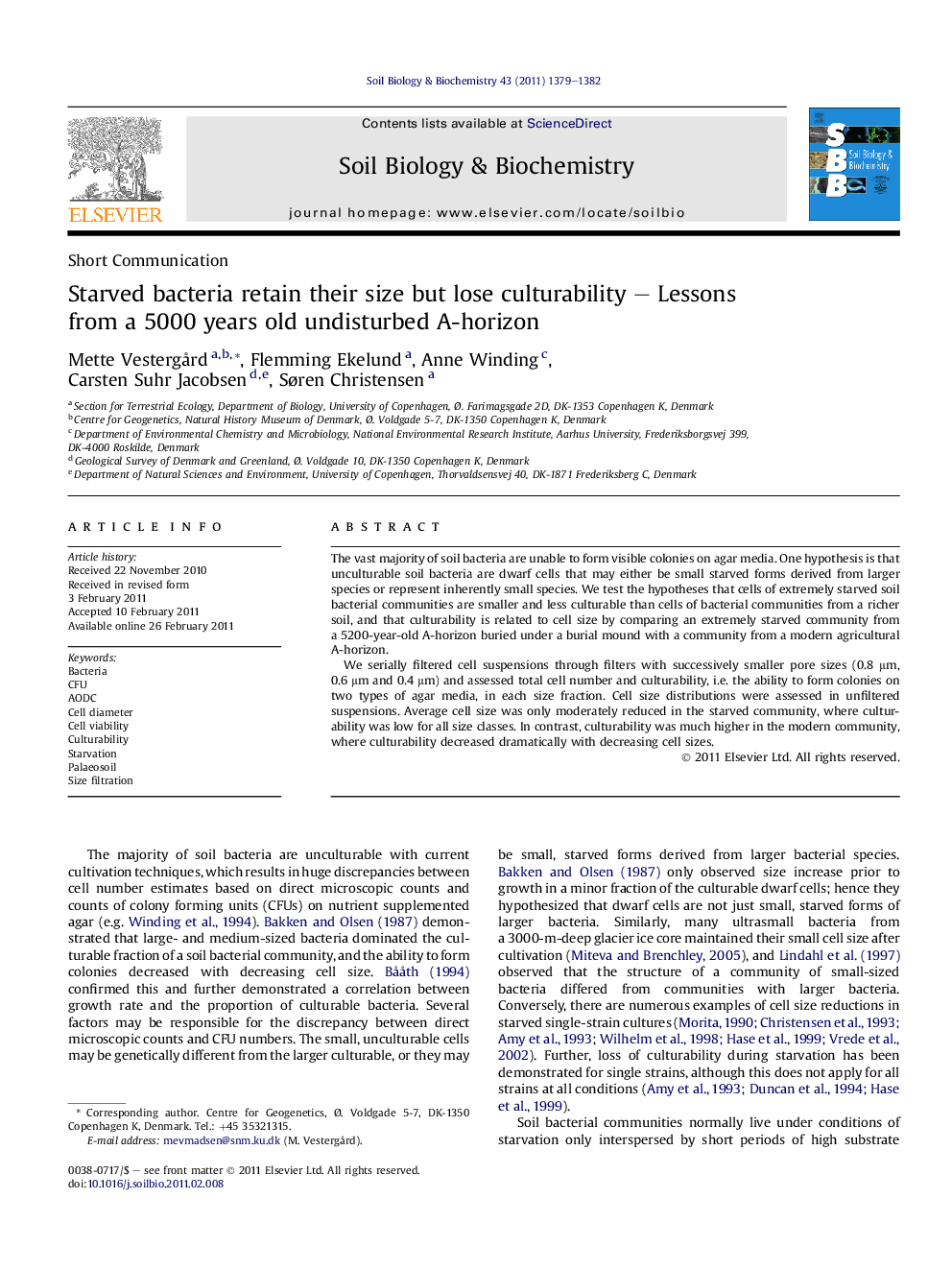| Article ID | Journal | Published Year | Pages | File Type |
|---|---|---|---|---|
| 2025316 | Soil Biology and Biochemistry | 2011 | 4 Pages |
The vast majority of soil bacteria are unable to form visible colonies on agar media. One hypothesis is that unculturable soil bacteria are dwarf cells that may either be small starved forms derived from larger species or represent inherently small species. We test the hypotheses that cells of extremely starved soil bacterial communities are smaller and less culturable than cells of bacterial communities from a richer soil, and that culturability is related to cell size by comparing an extremely starved community from a 5200-year-old A-horizon buried under a burial mound with a community from a modern agricultural A-horizon.We serially filtered cell suspensions through filters with successively smaller pore sizes (0.8 μm, 0.6 μm and 0.4 μm) and assessed total cell number and culturability, i.e. the ability to form colonies on two types of agar media, in each size fraction. Cell size distributions were assessed in unfiltered suspensions. Average cell size was only moderately reduced in the starved community, where culturability was low for all size classes. In contrast, culturability was much higher in the modern community, where culturability decreased dramatically with decreasing cell sizes.
► We examine the relationship between cell size and culturability in starved and active bacteria. ► No relationship between size and culturability in a starved community from a 5200-year-old soil. ► Culturability cell size dependent in an active community from modern arable soil. ► Cell size only moderately smaller in starved than in active bacterial community.
